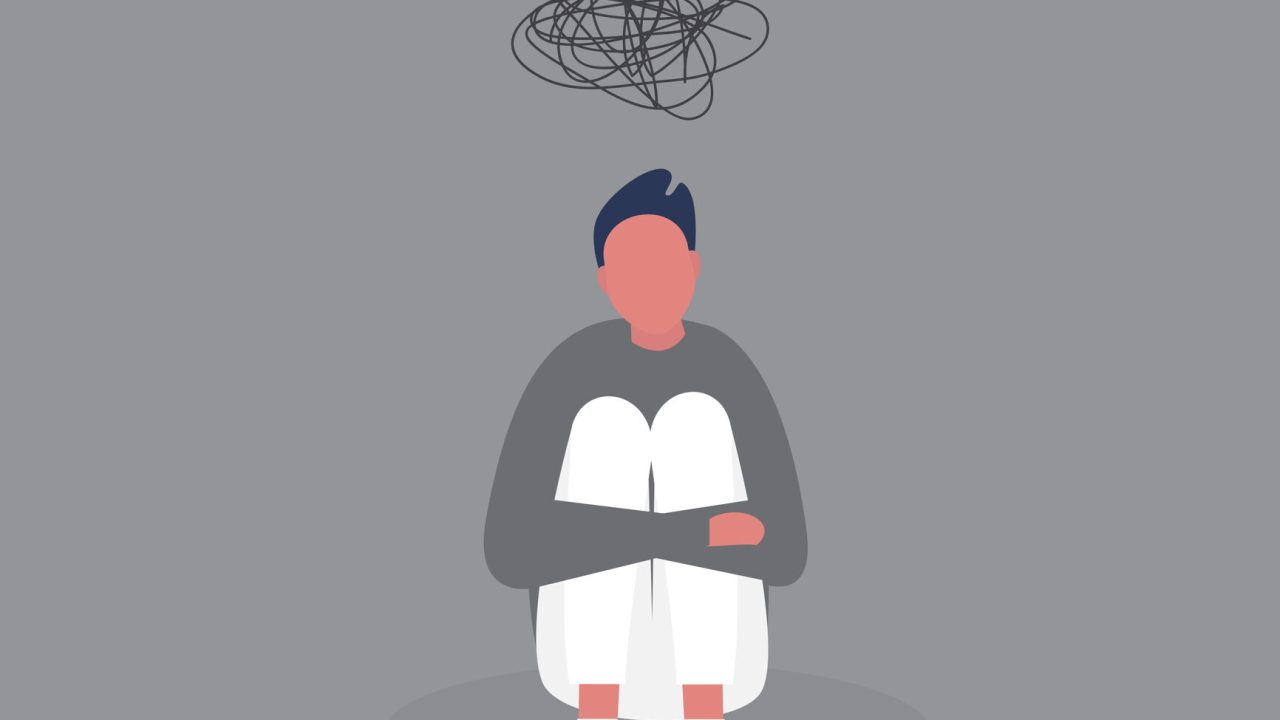By Khushi Vora
What is anxiety?
Anxiety Disorder is characterized as an emotional response to fear, danger, or stress that is triggered by various external circumstances or internal intrusive thoughts. It can manifest through physical symptoms such as irregular breathing, increased blood pressure, sweating, dizziness, trembling, and more. Most individuals have heard of anxiety and can recognize many of its symptoms, however the psychological and neurological processes when an individual is experiencing anxiety are not as commonly known. Let’s take a look at the specifics on anxiety in the brain and the body from a scientific perspective.
What Happens Within Your Brain?

Image source: https://www.additudemag.com/introvert-social-anxiety-adhd-adults/
1. Anxiety prompts a fight or flight response, releasing adrenaline and cortisol into your central nervous system. From here, it is the sympathetic nervous system (a subpart of the central nervous system) that responds to a situation of unfamiliarity, fear, or danger. As explained in an article published by Harvard Medical School, the amygdala is the part of the brain that receives this external information and is responsible for initially processing it in order to respond accordingly. When the amygdala perceives danger, the hypothalamus will pick up this signal and relay it to the body’s adrenal glands. Adrenaline and cortisol are flooded into your bloodstream which transports these hormones throughout the body, effectively triggering many physical responses that individuals experience with anxiety. Both blood pressure and heart rate can increase with blood being pumped more actively to vital organs. An excessive volume of adrenaline and cortisol being released is what causes anxiety to be so overwhelming. If one’s nervous system becomes overwhelmed more frequently with adrenaline and cortisol, their baseline levels of anxiety increase and they become more frequently sensitive to anxiety.
2. Rational thinking is dehabiliated on a more frequent basis. As the central nervous system becomes overwhelmed with hormones such as cortisol and adrenaline, individuals can struggle to focus on the reality of their circumstances and surroundings. This is because anxiety has shown to significantly sever the connection between the amygdala and prefrontal cortex, which is responsible for devising rational responses as it receives information. The weakening of this essential connection is what results in individuals struggling to gain a sense of control of their environment, and their negative emotions and thoughts will grow stronger.
3. Anxiety significantly increases brain hyperactivity. It has been found that the amygdala, which sends signals to release stress hormones, expands in size when an individual experiences anxiety on a more frequent basis. This translates to the individual being on high alert at all times and the amygdala frequently triggering the hypothalamus to release stress hormones, even when the individual isn’t in danger. Individuals who suffer from anxiety feel more frequently threatened in new environments as their brain is on constant alert to keep them safe and protected, even in non-threatening environments.
4. Anxiety and the stress it induces causes the brain to preferentially store negative memories. The hippocampus can be credited to receiving and storing long-term memories, however when it is overwhelmed with stress, it is observed to decrease in size. The consequence of such an important part of the brain shrinking is that the capacity to hold onto memories also decreases. Anxiety will cause stress-related memories to be higher prioritized in this brain “reorganization”, and therefore the majority of negative memories will be stored. Anxiety scientifically makes it difficult for individuals to cope with, by manifesting itself deeper and more long-term in any way possible.
How Does Your Body Respond After?
The parasympathetic nervous system can be credited with calming an individual after an anxiety attack, when their body recognizes that they are no longer in danger. Once the surge of adrenaline and cortisol have passed, the parasympathetic system falls into action to begin slowing and inhibiting many of the high-alert functions the body activates. This can include slowing heart rate to a normal rate and levelling blood pressure.
Resulting Effects
Individuals are often debilitated from being able to think rationally as their central nervous system is overwhelming their brain with adrenaline and cortisol. Some of the long term aftereffects of anxiety include PTSD, insomnia, depression, headaches, social isolations and tension-related muscle pains. Mental wellbeing is closely interlinked to physical wellbeing and, consequently, frequent mental stress negatively impacts the physical health of individuals who are affected by mental distress, as caused by anxiety. The physical health of individuals may significantly suffer, which is why it is so important to seriously recognize the severity of mental health and how it can impact all aspects of life.
Khushi is a first year biological science student at the University of Calgary. A particular topic that I am interested in is how diseases manifest within the human body and the prevention of those diseases. I’ve had the opportunity to research the development of acute myeloid leukemia which has furthered my interest within this field. In my downtime I enjoy experimenting in the kitchen with baking and cooking.






